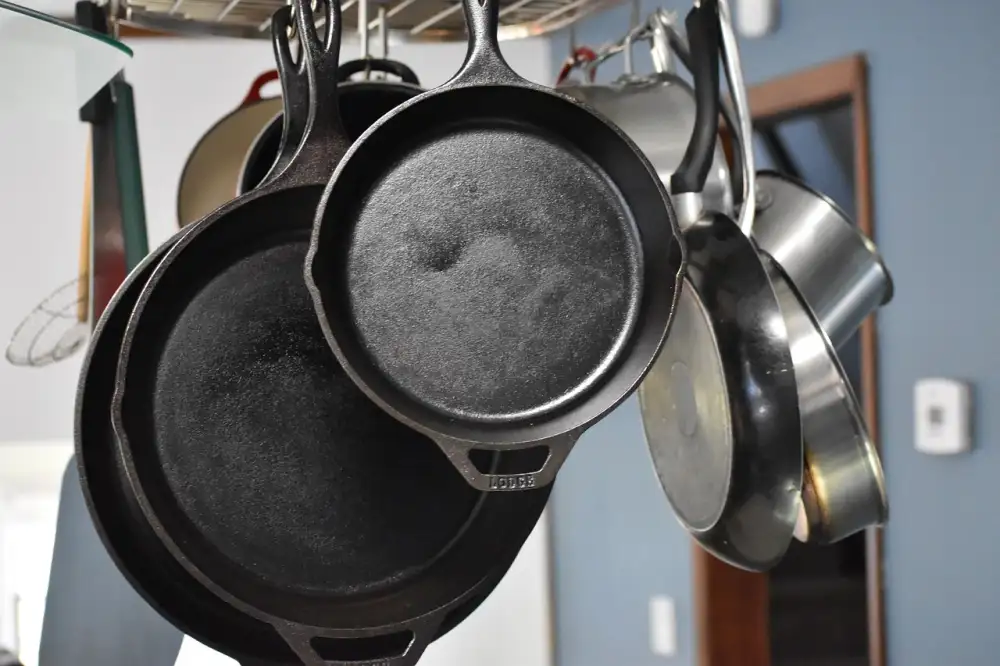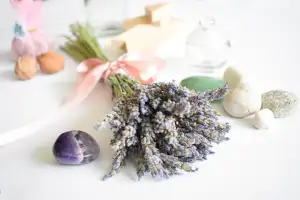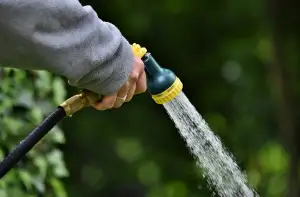Revive Your Rusty Cast Iron Skillet: A Step-by-Step Guide to Restoring Kitchen Brilliance

- Gather the necessary supplies for rust removal
- Scrub the skillet with a stiff brush to remove loose rust particles
- Create a vinegar solution and soak the skillet to dissolve remaining rust
- Scrub the skillet again to remove any remaining rust
- Rinse the skillet thoroughly and dry it completely
- Apply a thin layer of oil to prevent future rusting
- Store the skillet in a dry place to maintain its condition
A cast iron skillet is a timeless kitchen tool that can last for generations if properly cared for. However, over time, these skillets can develop rust, which not only affects their appearance but also their performance. That's why it's crucial to regularly maintain and restore your cast iron skillet to keep it in top-notch condition. In this step-by-step guide, we will walk you through the process of reviving your rusty skillet and bringing back its kitchen brilliance. So let's dive in and discover the secrets behind restoring the excellence of your cast iron skillet!
Gather the necessary supplies for rust removal
To successfully remove rust from your cast iron skillet, you will need a few essential supplies. First and foremost, you will need a stiff brush or scrubber to help loosen and remove the rust particles. Look for a brush with firm bristles that can effectively scrub away the rust without damaging the skillet's surface.
Next, you will need white vinegar, which is a powerful natural cleaner that can dissolve rust. Make sure to have enough vinegar on hand to fully submerge your skillet during the soaking process.
Additionally, you will need a clean cloth or sponge for scrubbing and wiping down the skillet. Choose a cloth or sponge that is non-abrasive to avoid scratching the surface of your skillet.
Lastly, make sure to have some paper towels or a clean dish towel for drying the skillet after rinsing. It's important to thoroughly dry the skillet to prevent any moisture from causing future rusting.
By gathering these necessary supplies, you'll be well-prepared to tackle the task of removing rust from your cast iron skillet and restoring it to its former glory.
Scrub the skillet with a stiff brush to remove loose rust particles
Once you have gathered the necessary supplies for rust removal, it's time to tackle the first step: scrubbing the skillet. Using a stiff brush, gently scrub the surface of the skillet to remove any loose rust particles. Be sure to cover all areas, including the sides and bottom of the skillet. This will help prepare the skillet for the next step in the restoration process. Remember to be thorough but gentle to avoid damaging the skillet's surface.
Create a vinegar solution and soak the skillet to dissolve remaining rust
To create a vinegar solution, mix equal parts of white vinegar and water in a container large enough to submerge the skillet. Place the rusty skillet into the solution, ensuring that it is fully immersed. Let it soak for at least one hour or overnight for more stubborn rust. The acidity of the vinegar will work to dissolve the remaining rust, making it easier to remove during the next step.
Scrub the skillet again to remove any remaining rust
After soaking the skillet in the vinegar solution, it's time to give it another scrub. Use a stiff brush or steel wool to scrub away any remaining rust particles. Pay extra attention to stubborn spots and make sure to cover all areas of the skillet. The goal is to remove any traces of rust and reveal the smooth surface underneath. This step may require some elbow grease, but it's crucial for achieving a rust-free skillet that's ready for use.
Rinse the skillet thoroughly and dry it completely
After scrubbing the skillet to remove any remaining rust, it is important to rinse it thoroughly to remove any traces of vinegar or rust particles. Use warm water and a sponge or cloth to rinse the skillet, making sure to get into all the nooks and crannies. Once rinsed, dry the skillet completely using a clean towel or by placing it on a low heat on the stovetop. It is crucial to ensure that there is no moisture left on the skillet as this can lead to future rusting. Taking the time to thoroughly rinse and dry your cast iron skillet will help maintain its condition and prevent any further rust from forming.
Apply a thin layer of oil to prevent future rusting
Once you have thoroughly cleaned and dried your cast iron skillet, it is important to apply a thin layer of oil to prevent future rusting. This step is crucial in maintaining the skillet's condition and ensuring its longevity. To do this, simply pour a small amount of vegetable oil or any other cooking oil onto a paper towel or cloth. Rub the oil all over the surface of the skillet, including the handle and sides. Make sure to coat every inch evenly. The oil acts as a protective barrier against moisture, preventing rust from forming. It also helps to season the skillet, enhancing its non-stick properties and adding flavor to your dishes. After applying the oil, you can either leave it on or wipe off any excess with a clean cloth. By regularly applying a thin layer of oil, you can keep your cast iron skillet in pristine condition and enjoy many more delicious meals for years to come.
Store the skillet in a dry place to maintain its condition
To maintain the pristine condition of your newly restored cast iron skillet, it is crucial to store it in a dry place. Moisture is the enemy of cast iron, as it can lead to rust formation. After cleaning and drying your skillet thoroughly, find a spot in your kitchen that is free from humidity. Avoid storing it near sinks or other water sources. Instead, opt for a cupboard or shelf where the skillet can be protected from any potential moisture exposure. By storing your skillet in a dry place, you can ensure its longevity and continue to enjoy cooking with it for years to come.
Conclusion: Enjoy cooking with a clean and rust-free cast iron skillet. By following these simple steps, you can revive your rusty skillet and restore its kitchen brilliance. With proper maintenance, your cast iron skillet will continue to be a reliable tool in your culinary adventures. Say goodbye to rust and hello to delicious meals cooked to perfection. So go ahead, grab that skillet and start creating culinary wonders with confidence. Happy cooking!
Published: 01. 01. 2024
Category: Home



